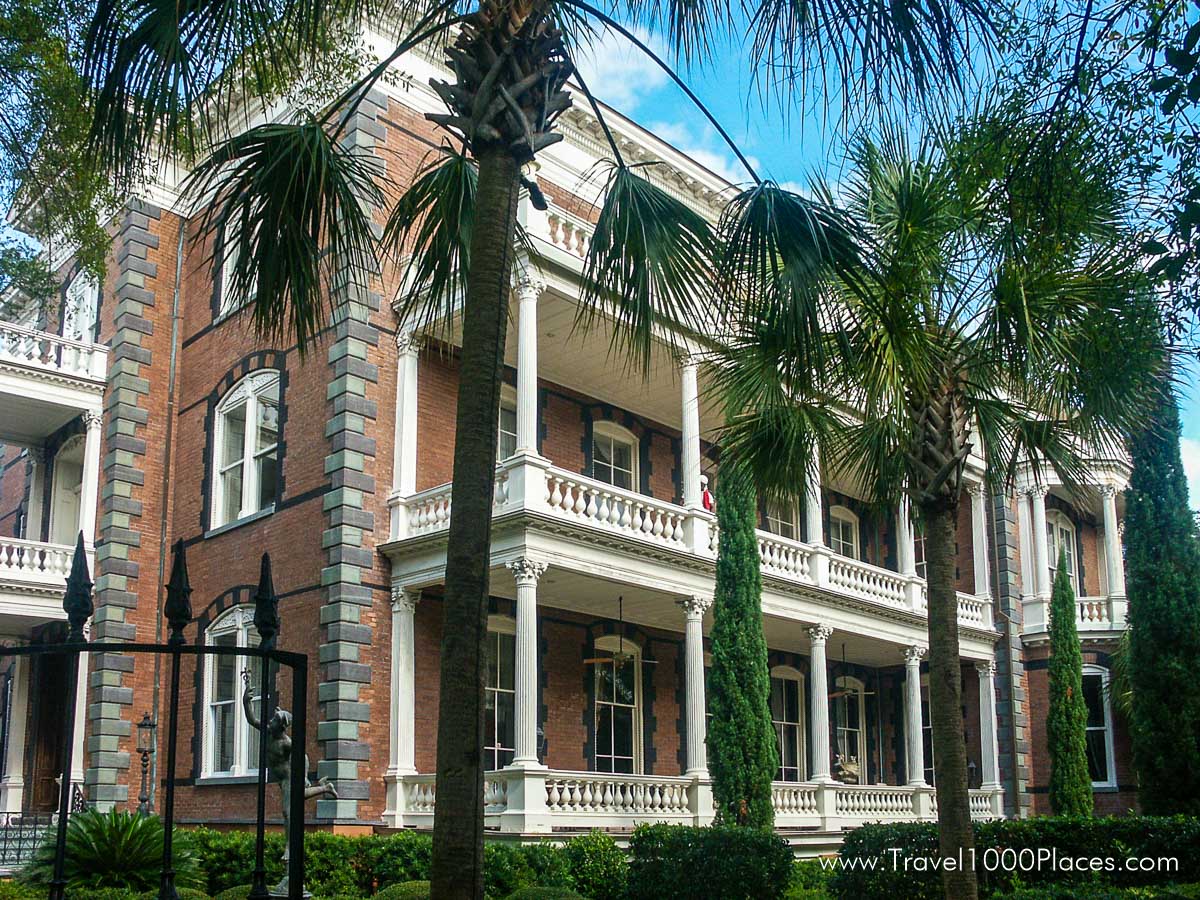
Charleston in a nutshell
Charleston is most likely America’s most beautifully preserved architectural and historic treasure, with a rich, 300-year heritage. Beautiful homes, churches and public buildings line tree-lined streets.
Magnificent formal gardens grace much of the historic district, adding to the beauty of the colonial, antebellum and Victorian architectureSurrounded by rivers and the Atlantic Ocean, the Charleston area offers several opportunities for visitors to “get out and sea” the sites. Take a sunset sail or river taxi across the Cooper River. Or catch a glimpse of history as you take a river cruise to Fort Sumter, the Union-occupied fort that was the target of the first shots of the Civil War.
The Old City Market, Market St. between Meeting and East Bay St, features small shops, restaurants, and a flea market with everything from produce to antiques. Hear the lilting dialect of Gullah ladies as they weave and sell handmade sweetgrass baskets. Charleston is often called a “living museum” — nowhere is this more clearly reflected than in the lovingly preserved houses and commercial buildings still in use today.
Area plantations & gardens offer a fascinating glimpse into the history and natural beauty of the lowcountry. Each is unique and offers a different perspective and interpretation of the area’s antebellum culture and history.
Charleston’s historic forts have been at the turning point of some of the nation’s most important events. Ft. Moultrie was the site of the first decisive patriot victory of the American Revolution, and Ft. Sumter was the scene of the first shots of the Civil War. No visit to the Charleston area would be complete without an understanding and appreciation of African influences on the area’s history and culture.
The first laws of the Carolinas guaranteed the widest measure of religious liberty in all of the 13 colonies. By 1704, Charles Towne was a picture of religious freedom with members of the English, French, Quaker, Anabaptist and Independent churches worshipping peacefully together in a small community.
Charleston sightseeing & top attractions
Read our full article: Charleston, South Carolina — sightseeing and attractions
Climate & Temperatures
Best time to travel /season
Year-round. The best travel time is in spring and fall due to pleasant temperaures.
Climate & Temperatures
Even when winter in South Carolina is a comfortable, mild season, one needs warmer clothing, too. Temperatures can drop down to near the freezing point. Summers are hot with high humidity.
| Month | Max | Min |
| Jan | 14,4 (58) | 2,2 (36) |
| Feb | 16,1 (61) | 2,2 (36) |
| Mar | 18,9 (66) | 5,5 (42) |
| Apr | 24.0 (75) | 10,5 (51) |
| May | 29,4 (85) | 15,1 (59) |
| Jun | 33,3 (92) | 21,1 (70) |
| Jul | 33,8 (93) | 21,6 (71) |
| Aug | 33,3 (92) | 21,1 (70) |
| Sep | 30 (86) | 18,0 (64) |
| Oct | 25 (77) | 11,1 (52) |
| Nov | 19,4 (67) | 5,0 (41) |
| Dec | 14,4 (58) | 1,5 (35) |
Data & und Facts
Public Transportation:
Busses and Trolleys, including DASH, the downtown area shuttle
Web: Welcome To CARTA | CARTA (ridecarta.com)
Population:
ca. 150.000 (est. 2020)
Airport:
Charleston International Airport
Web: Charleston International Airport (iflychs.com)
Elevation:
Sea level
Charleston Daily Newspaper: Post and Courier | Charleston, SC. Local News, Sports and Weather
Visitor Center:
Charleston Convention & Visitors Bureau
423 King Street, Charleston

